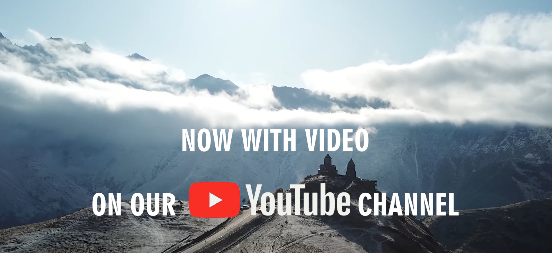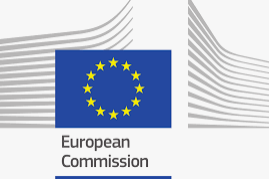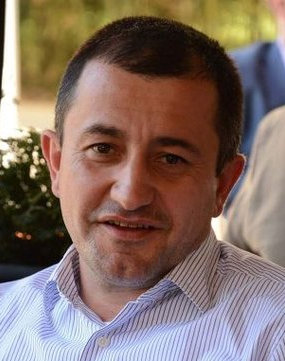04.05.2021 (Caucasian Journal).Today we want to present to our readers’ attention some literally vital statistics. In Georgia, the number of COVID-19 related fatalities in 2020 was 2,528. But during same year, 6,640 were injured in road accidents, and 450 people’s lives were lost – and that’s despite the curfew and other restrictions on mobility.
Regrettably, the road safety gets modest media attention in contrast to tremendous coverage of COVID-related risks, while 6500 individuals have been killed in road accidents in Georgia over the past ten years. This death toll places Georgia on the very top of Europe’s most dangerous roads – see graphs below, based on two independent data sources: WHO and OECD.
Norway has the Europe’s lowest road mortality level, according to the same graphs. That’s why we interviewed Guro RANES, Director of Road Traffic Safety at Norwegian Public Roads Administration (“Vegvesen”), and Jan JOHANSEN, General Director of Norwegian Council for Road Safety (“Trygg Trafikk”).
Alexander KAFFKA, editor-in-chief of Caucasian Journal: Welcome to Caucasian Journal. We are especially interested in the interview with you, because road safety is a particularly serious problem in our region. And you can see why, if you look at the graphs…
 |
| Click to enlarge |
Let me start with a question about your organizations: Trygg Trafikk is not a government body, if I’m correct, while Vegvesen is governmental. What are your roles in keeping Norwegian roads the world’s safest?
 |
| Click to enlarge |
AK: What are the connections between government and non-governmental institutions in road safety, and how do you divide your functions?
Jan JOHANSEN: The Norwegian Council for Road Safety is a non-governmental and independent organization. Nevertheless, we cooperate closely with the government on both national and regional level, for instance through participation in national and regional action plans for road safety.
Some very fresh data from EU:
On April 20, 2021, the European Commission published figures on road fatalities for 2020. Over previous decade 2010-2020, number of road deaths dropped by 36%. This was short of the target of 50% fewer deaths that had been set for that decade. However, with 42 road deaths per 1 million inhabitants, the EU remains the continent with the safest roads in the world. As a comparison, the world average lies at more than 180.
EU Commissioner for Transport Adina Vălean said: “We have reiterated our commitment to … bringing down the death toll for all modes of transport close to zero”
Guro RANES: NPRA and Trygg Trafikk have worked well together for several decades, both nationally and on the regional level. Over the years we have developed a close and well-functioning relationship and we have a good and well-defined understanding of our roles and responsibilities.
AK: Trygg Trafikk was established in 1956, so your history is rather long. Vegvesen’s history is even longer as it tracks back to 1864. What are the biggest challenges, or obstacles, that your organizations had to overcome? Where they legal, technical, psychological?
GR: Vegvesen has a long history and has experienced several big changes, both in the society as a whole and in our role and responsibilities. Regarding road safety, I think our biggest challenge is to keep our holistic and systematic approach to our work. We must continue our evidence-based work, targeting the road users, vehicles and the infrastructure.
AK: Speaking about psychology, I cannot help bringing up the importance of people’s mentality. In South Caucasian region, it is commonplace to blame risky driving to the explosive “southern temper”. It also may serve as an easy justification for inactivity of the authorities, who obviously cannot change the national character. Do you agree there is a connection between the “temper” and a disciplined driving behavior?
JJ: Well, I won`t draw that line, but I certainly agree that there is a connection between the people’s behavior in traffic and the risks of accidents. In Norway a considerable part of the decrease in numbers of fatalities and severely injured in traffic is explained by improved traffic culture over time. For instance, more and more people do keep the speed limits, and less and less drink and drive.
GR: In Norway, we have for several years had a big focus on changing the attitudes and behavior of the road users and drivers. This can be done by teaching the children the traffic rules and safe behavior when in school, risk-based diver education before getting a license, traffic safety campaigns, and control and sanctions by the police. Our goal is that everyone should have the knowledge to make good and safe decision for both themselves and others. I think this is possible even for a "southern temper".
The road safety in Norway is based on Vision Zero, with the ambition that nobody should be killed or seriously injured in road traffic.
AK: Do you have any unique know-how, which might be used elsewhere, and in our region in particular?
JJ: I think success in road safety is more a matter of targeted and long-term work than “one unique how-know”. In Norway Vision Zero [Vision Zero is a multi-national road traffic safety project that aims to achieve a highway system with zero fatalities – see more information below], and road safety work has broad political support. The government on all levels and sectors, non-governmental organizations and private sector cooperate. We call it “the Norwegian cooperation model”.
Some detail about Vision Zero:
 Vision Zero is a multi-national road traffic safety project that aims to achieve a highway system with zero fatalities or serious injuries involving road traffic. Vision Zero started in Sweden and was introduced in 1995. Vision Zero has been also adopted in other countries.
Vision Zero is a multi-national road traffic safety project that aims to achieve a highway system with zero fatalities or serious injuries involving road traffic. Vision Zero started in Sweden and was introduced in 1995. Vision Zero has been also adopted in other countries. Vision Zero is based on an ethical principle that "it can never be ethically acceptable that people are killed or seriously injured when moving within the road transport system." A core principle of the vision is that “life and health can never be exchanged for other benefits within the society”.
As an ethics-based approach, Vision Zero functions to guide strategy selection. For example, in most countries road users bear complete responsibility for safety. Vision Zero changes this relationship by emphasizing that responsibility is shared by road users and transportation system designers.
Caucasian Journal is planning to devote a separate article to implementation and efficiency of Vision Zero.
AK: Is there anything that still needs improvement in your sphere, from your viewpoint? What are your organization’s future plans?
GR: The road safety work in Norway is based on Vision Zero, with the ambition that no one should be killed or seriously injured in road traffic. Since in Norway we have been doing well for the many years and the number of fatalities in traffic is on an all-time low, it may be challenging to keep up the attention and importance of still prioritized road safety measures.
For driving at 80 km/h in the 60 km/h zone, the fine is almost 600 euro.
If you have over 1.2 per mille alcohol in your blood, you receive a fine equal to 1.5 times your monthly gross salary, lose your driving license for 1-2 years, and get a prison sentence.
AK: How severe are the fines in Norway, for example for speeding, drunk driving, or driving under drugs? What is the optimal balance between administrative ways (punishments, fines etc) and the educative methods?
JJ: The fines for breaking the Road Traffic Act in Norway are very high. For instance, if the police catch you driving 80 km/h in the 60 km/h zone, the fine is almost 600 euro. If you have more than 1.2 per mille alcohol in blood you receive a fine equal to 1.5 times your monthly gross salary, lose your driving license for 1 to 2 years and get a prison sentence. People are informed about this, but here is unfortunately not much use of educational methods combined with punishments.
Speaking about Nordic/Baltic experience:
Estonia’s creative approach
As part of campaign to crack down on speeders, police in Estonia in 2019 started an experiment. Drivers who were caught speeding were then given the choice. If drivers didn't want to pay the fine, they would sit idly on the side of the road for a pre-determined time of between 45 and 60 minutes, depending on how fast they were caught traveling. Once the time-out was over, the offenders were free to go.
 |
| Image: The Economist |
AK: Do the mass culture or medias in Norway have any significance for propagating safe driving? Or do they rather play a destructive role – for instance with the Hollywood cult for “muscle cars” and “heavy guys”?
GR: There are of course exceptions, but in general I find that the media in Norway are writing positively about and promoting road safety. If there are new statistical results or new research available, they usually write about that in a positive way.
AK: In January 2018, Georgia launched a nationwide reform of Periodic Technical Inspection (PTI), aimed at reducing emissions and accidents caused by technical deficiencies. Though since January 2019 inspection has become mandatory for all types of vehicles, the results of PTI reform are controversial. The inspection is carried out in laboratory only (no testing is allowed on the road), therefore the drivers use all kind of tricks to pass the inspection – even borrowing car parts and equipment such as tires, lights, fire extinguisher, first aid kit... How is PTO carried out in Norway, and how such wrongdoings may be eliminated?
GR: The PTI in Norway is regulated by common EU standards. The car repair shops that do the inspection have to have a license, and the NPRA is routinely checking if they are doing a good job. Private cars are subject to PTI every second year. The standards of cars in Norway are reasonably high.
The main pillar in our vision is the ethical aspect. We talk a lot that it is unacceptable that so many people die or are seriously injured in traffic. It is important to make people aware that irresponsible behavior in traffic may result in your killing someone else. No one wants to do that.
AK: Everybody is concerned by COVID pandemic. In early 2020, thanks to efficient measures, Georgia was one of Europe’s safest countries – with just 15 victims of COVID during first half of 2020. However, the death toll for automotive accidents during the same period was 203 people – over 10 times more! Despite this, the road safety is not receiving public attention it deserves, which is not even comparable to attention (and financing) allocated for the pandemic. What measures would you consider, to get the society focus on such a vital sphere?
GR: We have had good experience with the introduction of Vision Zero in Norway. The main pillar in our vision is the ethical aspect. We talk a lot that it is unacceptable that so many people die or are seriously injured in traffic. No one wants to lose a family member, a friend, a neighbor or a co-worker in traffic. Everyone can do simple things like using the seatbelt, keeping the speed limits and not drink and drive. It is important to make people aware that irresponsible behavior in traffic may result in your killing someone else. No one wants to do that.
AK: My last question is about international cooperation. We have heard about Nordic Road Safety Council (Nordisk Trafiksäkerhetsråd) – the Scandinavian road safety organization, but maybe you tell us a bit more about the advantages it creates for Nordic countries?
GR: We find it very useful and motivating to share experiences and challenges with our Nordic colleagues. Our roads, traffic rules and culture are quite similar, so to learn and discus common challenges and share knowledge and experience makes a lot of sense.
AK: Thank you very much!
Readers' comments
Gela KVASHILAVA
Prince Michael International Road Safety Award Winner
Member of Board of Directors of Road Safety Alliance
Next week, the 6th UN Global Road Safety Week will be held to advocate for Streets for Life by making 30 km/h speed limits the norm for cities worldwide, in places where people mix with traffic.
The Week will be the occasion to garner policy commitments at national and local levels to deliver 30 km/h speed limits in urban areas, generate local support for such low speed measures in order to create safe, healthy, green and livable cities and officially launch the Decade of Action for Road Safety 2021-2030 and its Global Plan.
The Week will also highlight the links between 30 km/h speed limits and attainment of a number of Sustainable Development Goals, including those on health, education, infrastructure, sustainable cities, climate action and partnerships.
In Georgia, the return to new normal will mean a return to many other ‘’old dangers”. 4,999 road accidents were reported in Georgia in 2020, with 450 killed and 6,640 injured, the Georgian National Statistics Office has reported, based on the data of the Interior Ministry. In fact, reduction in road accidents and the number of deaths and injuries were the result of the restrictions, though given the sharp decrease in mobility, the number of deaths and injuries is much higher. The Covid-19 has caused many to forget how damaging road crashes, and country simply cannot afford it, especially when health services are burdened by the pandemic and severely weakened. Therefore, there will be trade-offs, but one area where we now know lives can definitely be saved is in road safety, which remains a growing threat to public health and the economy.
Safer mobility helps to expand regional economic integration, and foster implementation of the Georgia’s association agreement with the EU, which has large potential to deliver the economic growth the country needs now more than ever after pandemic. The safer transport sector in its broader context could also become one of the most important tools for economy, agriculture and tourism development. This helps to underline the growing importance of transport, where the sector is fundamental to the move towards regionally integrated economies with safe transport corridors and sustainable urban hubs.
In 2016, the Georgian government has adopted a National Road Safety Strategy as a key program for reducing fatal crashes, and several stakeholders are putting in a lot of effort to achieve that goal. In addition, a road safety action plan is approved by the government annually. Still, stakeholder partnerships remain crucial, and one of the spin-offs of the Covid-19 crisis is the improved coordination between the public and private sectors, with both acknowledging the relevance of the other. Hopefully, this is something that will continue, and expand into road safety field coming decade, as a collaboration involving private business with the public sector to be a key factor for improving road safety.
The Covid-19 crisis expanded cooperation between the public and private sectors along with other stakeholders. Hopefully, such commitment can continue after the crisis to strengthen partnership-based strategies for other Georgian challenges, including road safety as a key factor for sustainable growth. One area where the lives can definitely be saved is in road safety, as the "vaccine" called safe system approach has been working effectively in many countries.






No comments:
Post a Comment